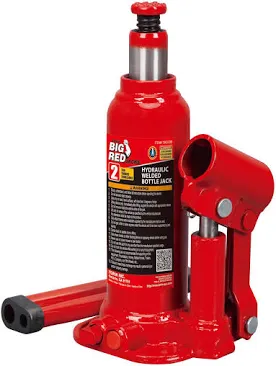I need to be clear that my intentions for that graphics card are sexual in nature
I got the 24gb model last August. Laugh a little Everytime I boot up half-life alyx and the game says not enough vram
How much vram does alyx need? Wtf
I think it’s just because it’s not an Nvidia card the game is freaking out. Game runs just fine.
How fine are we talking? What would you do to it?
deleted by creator
Oh I was talking about bangin’ the gpu
deleted by creator
I’ve got it on ultra settings and have never noticed a frame rate drop. The game is around 4 years old and has a number of bugs, Valve kind of just abandoned it despite it being one of the flagship VR experiences. The software not recognizing a CPU that came out 2 years after launch and perhaps a good six months since it’s been updated isn’t a huge surprise.
Jesus fucking Christ
I think it’s 7900XTX fucking PlayStation 2
Or the other way around. We can never be too sure.
I cast rule 34
Roll a charisma check
12
Failed, go to horny jail.
👉 👈
The Playstation 2 is a power bottom.
Kinda looks like sexy/down bad Jesus to me.
Yeah. I got one and it’s a beast. I had to design and print a support for its ass to keep it from sagging.
Time to bring back the old horizontal style cases from the 80s/90s lol
you got no idea how much i miss those.
Miss my old purple and grey packard bell with windows 3.11
Just makes me think prince of Persia and atomic bomberman. And minesweeper of course.
better times, man… better times…
100%. Before gaming got “corporate”
I switched to a server-style case which sits horizontally exactly for this reason. The sag will only get worse.
I’m using a sandwich style case with the PCIE port at the top of the case and the 3 scews for the slots are at the bottom. It basically pushing the card up and backwards into the PCIE extension cable’s slot. No ass sag, but I can tell there’s a limit to how much it would be able to handle like that. I’ve got a 7900xt (not xtx) so it works for what I need right now.
Which case is that?
Your case of choice + 90° rotation
I’ve been using one of these 4U server chassis. Of course it is in a rack with some other equipment. I’ve been quite happy with it; lots of space.
Not to compare, but I remember I had put a few olden (20 years old at least) lego bricks from my childhood together and made a support castle underneath an XFX brand 6700 XT with 3 fans.
I’ve printed one as well for mine, but I’m interested in yours if you would care to share it :)
I’ll get it shared tomorrow. It’s designed after a bottle jack but is completely threaded to allow for adjustment and doesn’t have any of the handle components, obviously.

I may be misinterpreting what you’re describing, but it kind of sounds like you’ve reinvented the machinist jack.
Not throwing shade, it makes sense and there’s a reason that machinists the world over use them to tackle the same sort of problem of how to support sagging parts- it’s simple and it works. And coming up with the same solution shows that you have a good understanding of the issue and how to tackle it.
Just pointing it out because I love the overlap between different fields and hobbies, and maybe if you didn’t already know that machinist jacks were a thing you’ll find inspiration for a version 2.0 if you ever feel the need to make one.
I’d also like to see your version when you get around to sharing it.
Thanks for the kind words!
And yes, I designed this in a vacuum, but it is actually a common machinists jack, it seems. Minus a few neat features I saw around the web (like a lock screw component) it’s a 1:1 match for functionality.
Like you, I have a love for projects and tools that are shared across different fields. Mostly due to my ADHD, I have a slew of hobbies that focus around mechanical engineering, chemistry and biology. It’s extremely cost effective to commingle different hobbies, actually. My 3D printing and CAD work is universal, my collection of chemistry glass is used for rando chemistry things as well as mycology. All of my fittings, connectors and electronic components are also universal… etc. etc.
As requested: https://www.printables.com/model/926491-anti-sag-gpu-stand-aka-machinists-jack
I feel like it’s a pretty common experience for a lot of us maker types- we come up with a solution to a problem, maybe we tried searching for one and came up empty, or maybe we just thought it would be fun to make from the get-go, then sometime later we stumble upon someone selling pretty much the exact thing we made and think “huh, so thats what these things are called” maybe with a touch of disappointment that your idea wasn’t as original as you thought, or maybe just intrigued because you just added another term to your vocabulary and you have a better idea what to search for next time.
Yours looks good though, It’s probably unnecessary but I’d be tempted to add like a U-shaped cradle piece to the top to help keep it in place if your computer ever gets jostled for any reason, and maybe a jam nut at the bottom to make sure it stays where you set it. Again probably totally unnecessary, but I always figure that if it’s worth doing it’s worth overdoing.
What sort of printer and filament/resin are you using? I’d worry a bit about it warping or sagging over time from the heat inside a computer. I know some materials can handle the heat better or worse than others, but I haven’t dipped my toes into 3d printing myself yet, so I may be overestimating how much of an issue it is.
And can your printer make decent screw threads, or do you have to clean them up afterwards with a tap and die or something? I’m not really up on the current state of 3d printers, but one of the first 3d printed objects I remember ever handling was back in high school 15 or so years ago. One of my teachers went to a conference where they were showing off new gadgets for computer and shop classes, and he brought back a couple 3d printed crescent wrenches for us to fondle. I remember the screws being really crunchy and they almost but didn’t quite work, so in the back of my mind I’ve always thought of functional screw threads as something 3d printers can’t quite do, so it’s wild to me if we’ve gone from barely able to make even a coarse thread with huge tolerances work to being able to make pretty fine threads with pretty tight tolerances.
Of course back then, they hadn’t even really settled on calling it “3d printing,” I remember that teacher calling it a “rapid prototyping machine” when he was telling us about it, and described it as being “like a 3d printer”
In addition, I can’t tell people enough that most "specialty’ tools are most likely common tools from other fields, but maybe include a fancy adapter or something. And yes, I don’t want to know how many times we have solved problems that were already solved. (A benefit is that we understand the true problem to its core and integrate those solutions much more efficiently into future projects.)
My “jack” is printed in PETG as it has a higher glass transition temperature (80°-85°C) than PLA. I have had PLA prints on my shelf start to sag due to age but most of that is likely negated by additives in new generations of PLA+. (or PLA Pro, or whatever buzzword is currently used.) PETG should be just fine for this. ABS would be another option, too.
I currently have a Prusa Mini that is my go to, but a large format Prusa XL with 5 separate hotends is squarely in my sights at the moment. (I have had several other printers that eventually got disassembled for parts.)
The threads on my print are super tight and no post processing was needed. It just screwed together after it was done. I did go to the trouble of designing a shoe looking adapter thing for more surface area against the card, but the weight of the card is enough to keep it from moving around. The thread angle is such that the downward pressure keeps enough friction on the threads so it’s not going anywhere through any jostling. (Rough threads are a feature, in this case.)
But yeah, printers these days are much more accurate and less prone to errors. Just 10 years ago, every other print I did was a failure. Now? Failures are quite rare and that is mostly because of the tech. Now that layers are consistent enough these days, most threads I print are with 0.2mm layers which is good enough if I keep the tolerances wide enough in CAD. (My go-to is 0.25mm tolerance for fitted parts or less depending on the application.)
Yeah! I remember those wrenches quite well. Print-in-place models are somewhat mainstream now. I randomly put one on Printables and it is far more popular than I ever expected. The success rate seems quite high given the number of random printers that are out there: https://www.printables.com/model/489431-print-in-place-hinge . I only bring this up as it’s a testament to how far the tech has come, and only recently.
I literally just got my first resin printer and have yet to have a failure. Getting consistent prints at 0.03mm has been a breeze and quality is limited by the model, not the printer. (Resin printer fanatics are likely to argue with me on that point.) Getting ABS plastic strength with hyper-detail is amazing! However, it’s messy and smelly, so that sucks. (I am going to setup some real precision testing this evening as I have had some projects on hold for a couple of years due to FDM limitations.)
Hell yeah, love everything about this comment. Keep being you.
This one is from Sapphire and it came with an anti-sag bracket. My 3080Ti from MSI did too actually.
Mine probably did too, TBH. Why I didn’t use it is anyone’s guess.
Fuck that thing. THREE slots? I had to abandon one project and look for alternatives because my GFX card already block one slot from being used, but blocking two is crazy.
Three slot bracket with a four slot cooler.
wow it’s not the dwarf toploading ps2 either.
What kind of unholy abomination will be born from this? Some kind of half-PC half-console hybrid?
Oh we already had that.
And I thought my 6800XT was big
I thought consoles were bigger.
Damn boi, that’s a thiccccc boi
I love this card! I put it in the Xproto L case and it looks amazing.
I purchased both the 7900xtx and a 4090. Kept the 7900xtx. Absolutely adore this card. Being a Linux nerd made it a no brainer, but the performance vs price ratio wasn’t there.
Are they trying to chop motherboards in half or what?












